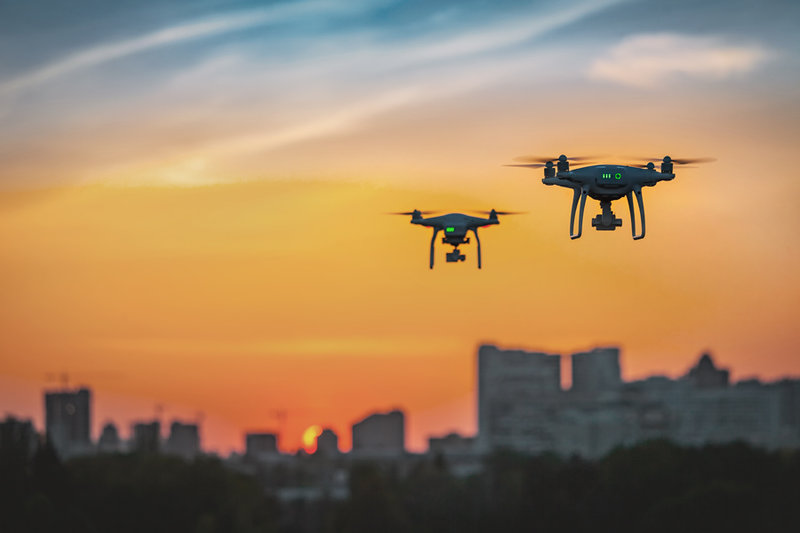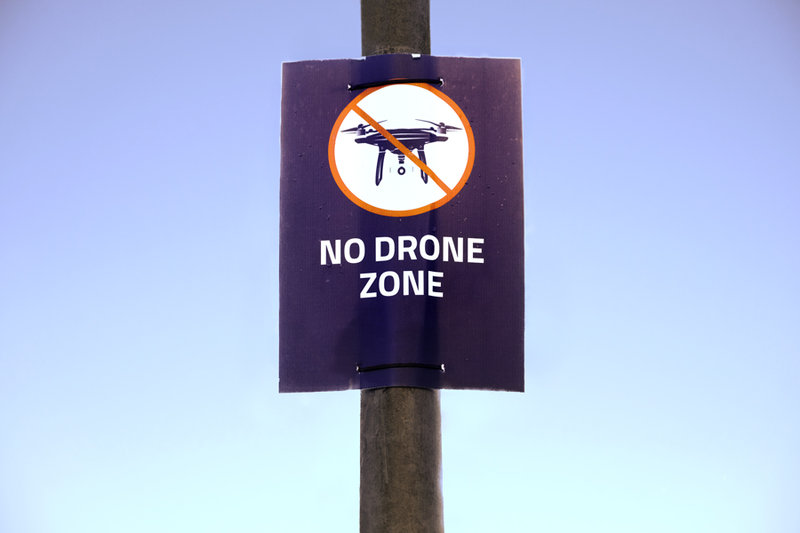Operations
Gatwick drone crisis: what can we learn from the fiasco?
Drones flying over Gatwick Airport caused chaos in December, with hundreds of flights cancelled and tens of thousands of passengers left waiting. The South London airport is now rethinking its anti-drone strategy, with many hubs following its lead. So what lessons can be learned, and what solutions are available to prevent similar disruption from happening again? Adele Berti reports
In late December 2018, Gatwick Airport was enjoying one of the busiest – and therefore most profitable – periods of the year, with thousands of Britons and tourists flying in and out for the Christmas holidays.
But their cheerful Christmas spirit quickly turned to discontent as the airport plunged into chaos following the sighting of two unauthorised drones which triggered a state of alert that suspended all flights and grounded thousands of passengers for almost 33 hours.
Having caught the UK aviation sector unprepared, the near shutdown is estimated to have cost the airport’s partners and stakeholders over £50m, of which £15m will come directly from Gatwick’s pockets. One month later, a similar, though far less disruptive episode also hit Heathrow Airport, which restored operations in the space of an hour.
Figures from the UK Civil Aviation Authority (CAA) show that the number of operators with permission for commercial operation of drones rose to a mammoth 4,530 in 2018 – a considerable jump from the 110 in 2013 and 1,769 in 2016 – making it increasingly evident that joint action needs to come from both the aviation industry and governmental authorities at both a national and international level.
Caption.
Image courtesy of
An immediate reaction
In January, both hubs were reported to be planning considerable investments in anti-drone technology. In particular, Gatwick seems to have spent around £5mto buy the same equipment deployed by the Royal Air Force during the December crisis, a device that can reportedly detect and jam communications between a drone and its operator.
Nevertheless, according to Pablo Estrada, VP of marketing at US-based airspace security platform Dedrone, the episode triggered a chain reaction across sectors, showing there is considerable room for improvement when it comes to drones.
“Certainly, the incident in the UK has caused everyone to sit up straight and pay more attention,” to something that had previously been underestimated, he says.
Based on this principle, several UK facilities have been preparing for the worst as the chances of further drone-caused panic remain high.

Image: Mohd Syis Zulkipli / Shutterstock.com
For example, the airports belonging to the Manchester Airports Group (MAG), namely Manchester Airport, London Stanstead and East Midlands Airport already have in place some robust safety measures.
“All MAG airports have robust safety management plans in place to deal with the risk of drones, which are prepared in consultation with local police forces,” comments an MAG spokesperson.
Meanwhile, the UK Government has also undertaken meaningful action. Following a public consultation started in July, Downing Street announced plans to introduce new measures in the hope to address this issue more constructively in the future. Among these is the decision to give new powers to the police in the event of drone sightings, as well as collaboration with the CAA to educate consumers on the commercial use of drones.
Finally, as of March 2019, the government has also extended the no-fly zone for drones near airports to three miles, a drastic amplification compared to the previous 0.6 mile exclusion area.
Several UK facilities have been preparing for the worst as the chances of further drone-caused panic remain high
Key lessons learned from the Gatwick fiasco
Despite being the most prominent incident, the Gatwick crisis is far from an isolated event. Cases of near-collisions between drones and aircrafts and unexpected drone sightings close to an airport have regularly hit the news over the past few years, with the South London hub witnessing a similar situation back in July 2018.
Ben Marcus, co-founder and chairman of AirMap, a US-based provider of aeronautical data and services to drones, explains that the December incident was just the tip of the iceberg in a series of drone-related situations hitting airports around the world.
“The drone incursion at Gatwick exposed the lack of preparation, information and control when it comes to drone operations near airports,” he says. “And Gatwick likely isn’t the only one - many airports, civil aviation authorities and governments around the world are probably still insufficiently prepared to respond to drone incursions.”

Image courtesy of
But could it have been prevented? We will never know for sure, but a lot can be learned from the incident.
For example, months before the December chaos, Dedrone installed its counter-drone technology at four UK airports (which did not include Gatwick) as part of a study to identify and record drone activity. It emerged that UK drone pilots fly near airports around the same time and day, meaning that airports could be able to identify recurring patterns, areas and times of frequent drone activity.
“We're really trying to find a way to get actionable data into the hands of our customers,” explains Dedrone’s Estrada, “and we are helping them not only in getting alerted when there is a particular movement in the airspace, but also to help them identify patterns and activities so that they can adapt their security procedures and understand what's normal and what’s abnormal.”
The drone incursion at Gatwick exposed the lack of preparation, information and control when it comes to drone operations near airports
Anti-drone solutions are on the rise
Having suffered uncountable damages and altered the holiday plans of hundreds of passengers, December’s incident has opened the industry’s eyes. “The proliferation of drones is testing the limits of traditional air traffic management infrastructure and forcing governments to re-evaluate existing regulatory and technology frameworks to maintain this safety mandate,” explains AirMap’s Marcus, adding that basic regulation for drone registration would already make a substantial difference.
But while it might take some time before new regulations are in place, one thing is quite clear: drones are now a reality which, when it comes to airport security, can be addressed and prevented. And with the anti-drone market projected to be worth nearly $2.3bn by 2024, solutions are now more numerous and available than ever.
Meanwhile, in the US, the Federal Aviation Administration (FAA) has developed an app that tells commercial drone operators whether their product can fly or not in an area based on their GPS location. It also gives useful information to new pilots and updates in regulation changes.
However, while the FAA app can be of great help to those who use drones for commercial purposes, it might not be enough to support an airport’s security measures. For this reason, AirMap is promoting its UTM Platform, a digital air traffic management system designed to maintain safe integration and separation of drones and other aircraft and objects in low-altitude airspace.
Marcus explains that the AirMap platform can also “identify if a detected drone flying in a restricted area is known (registered) and adjust countermeasures to the threat.”

Image courtesy of
He hints that the technology could have been crucial in critical situations like the one that hit Gatwick: “This is essential in detecting, responding to and assessing the safety threat of an incident like the one that happened at Gatwick Airport.”
But while preventing a drone invasion could be the first step towards a safer airport, cases like Gatwick’s December crisis have taught that sometimes direct intervention might be the only solution to protect the safety of passengers and staff.
According to Dedrone, however, this is a much more complicated process, as international aviation recognises drones as aircrafts in flight. Therefore, shooting a drone down would mean downing an aircraft, an action that can be allowed only if a government agency initiates it.
Nevertheless, several companies, including Dedrone, are developing technologies to tackle drones, but they are yet to be authorised for commercial or airport use. These technologies include radio frequency jammers, fire arms, electromagnetic pulses, lasers, as well as anti-drone nets.
Whether with AirMap, Dedrone or one of the similar companies populating the anti-drone and drone-detection markets, there is now much higher awareness of what risks unauthorised aircraft can pose to airports. And failing to implement these technologies would risk leaving the aviation industry stuck in a reality where drones aren’t fully recognised for the hazard they can become.
Basic regulation for drone registration would already make a substantial difference